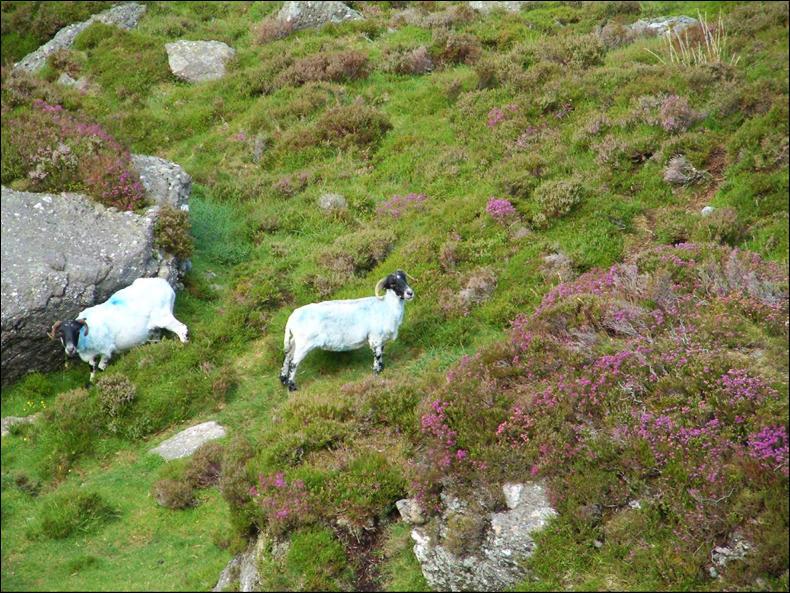The FoodWise 2025 Strategic Environmental Assessment Report recognises under-grazing as a threat to Natura 2000 sites. Catherine Keena, Teagasc environmental specialist, says these uplands offer key values in terms of quality and an opportunity for Ireland’s agricultural produce to be linked to and marketed as a high-end environmentally sustainable product.
She says while there are currently areas of undergrazing and overgrazing, overall the priority for the future must be to increase farming activity on the upland areas in order to keep them in a suitable agricultural and environmental condition. This will involve increasing the number of grazing animals on the actual upland areas and vegetation rejuvenation in some areas.
Economic returns
Declan Byrne, environment and technology adviser with Teagasc, says the main reason given by farmers in a Teagasc Wicklow upland study for reduced sheep grazing on the uplands related to economic returns.
Teagasc profit monitor results for 2015 show hill sheep have a gross margin of €30/ewe, and a net margin of €0/ewe. However, when examining the income from hill ewes, Declan says all forms of income should be taken into account, including agricultural and agri-environmental payments received by farmers, ie BPS, greening, GLAS and ANC. When the Single Farm Payment was replaced by the Basic Payment Scheme and the greening payment in 2015, entitlements were subject to convergence towards 90% of the 2019 national average. By 2019, all entitlements will have a minimum value of 60% of the national average value. He says this will result in large increases in money paid to farmers with upland areas, where payments were traditionally low. To put this into perspective, using the data from the farmers who were part of the Wicklow study is set out.
The average area of lowland was 32ha which is roughly the maximum area for payment under the ANC scheme, so it could be drawn down on the enclosed area alone without farming any upland area. The average area of upland/commonage was 51ha, and with an average GLAS payment of €5,000 over the whole upland area, the average GLAS payment is €98/ha. For BPS and greening, at 2019 rates, this will be €150/ha. This gives a payment from BPS, Greening and GLAS on the upland area of €240/ha, Declan explains.
Department of Agriculture minimum stocking rate (SR) on upland areas varies according to the carrying capacity of the land and is available on the commonage container on the Department’s website. Examples below calculate scheme payments per ewe for two hills with different carrying capabilities.
Because farmers have been receiving payments under BPS on upland areas without putting stock there themselves (provided grazing occurred) they do not see these direct payments as income from the hill sheep.
If farmers must be actively farming the uplands to be eligible for BPS, ANC, greening and GLAS, then this income can be attributed to ewes grazing on the upland area, which makes them very profitable, according to Declan.
Overgrown vegetation
Rejuvenation of overgrown vegetation should only be considered if it is the plan to follow this with sustainable levels of livestock grazing. Consultation with the National Parks and Wildlife Service (NPWS) is necessary if carrying out work in Natura areas.
Prescribed burning of dry heaths with overgrown woody heather can be very effective where the age distribution of the heather is too skewed towards old heather and all grassland areas are lost to a full stand of heather. Catherine says the aim is to return the habitat to optimum condition for farming and biodiversity which is a mosaic of heather and grassland with a good distribution of heather of all ages.
GLAS commonage management planning
The deadline for submission of GLAS commonage management plans (CMP) and commonage framework plans (CFP) on the online CMP system has been extended to 31 October 2017. These plans are currently being completed for farmers in GLAS I, GLAS II and GLAS III, which will determine the minimum ewe equivalents for each farmer in GLAS. In exceptional cases, derogation from the rules on stocking levels may be sought by means of appeal to the Commonage Implementation Committee (CIC).
Grazing uplands at a sustainable level is the ideal management for farming and biodiversity. The guide to the completion of the GLAS commonage plan (August 2015) sets out sustainable stocking rates for undamaged uplands. A further stocking co-efficient is applied, depending on the level of damage.

